All about growing hovea
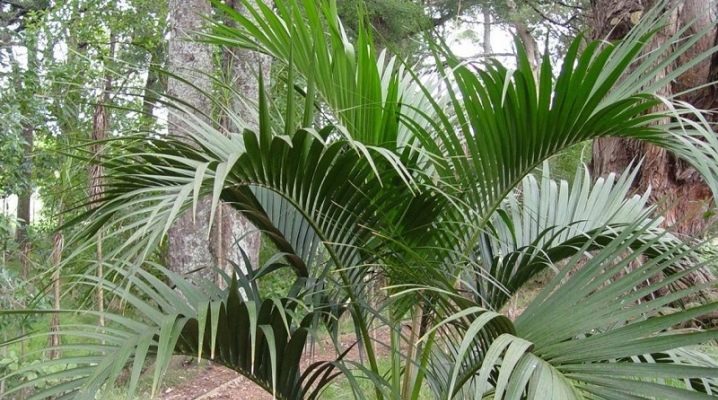
Indoor palms can turn any apartment into a real tropical paradise. Take at least hovei or, as it is also called, kentia. This unpretentious plant is just a godsend for both novice florists and experienced collectors of home plants.
It is hypoallergenic, non-toxic, does not require special care, but at the same time it looks amazing, purifies the air and brings home comfort to the atmosphere. This article reveals the main secrets of hovea content - from growing seeds to ways to combat diseases and pests.
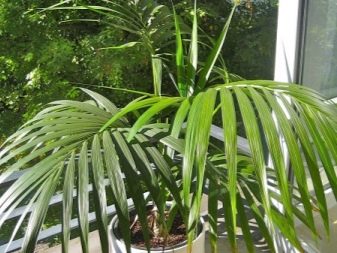
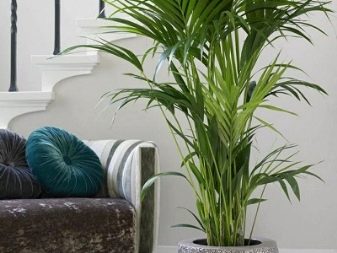
Description
Hovea (there is also a variant of the spelling "hovea") is a widespread houseplant from the arec family. In the wild, such a palm tree grows only in one place - on the tiny volcanic island of Lord Howe near Australia. Under natural conditions, its height can reach more than 12 meters, and artificially bred plants do not exceed 3 meters.
Hovea has been used as a home plant since the end of the 19th century. The simplicity of its content makes Hovea an ideal “green friend” for the ever-busy residents of city apartments, and its large feathery leaves create a bright accent in the interior, enlivening the space. Tall but graceful Kentia is perfect for minimalistic interiors in Scandi, Japandi, loft or contemporary style. But for small rooms with a lot of detail, it is wiser to choose more miniature plants - among the visual noise, a large palm tree will not look so impressive.
By the way, There are several popular beliefs associated with the content of the hovei in the house. It is believed that this palm tree helps in solving business problems, relieves fatigue and attracts money. These prejudices are connected with the fact that in Victorian England the hovea was a common decoration of living rooms and private offices in rich houses and palaces.
Over time, these palms began to be associated with wealth and prosperity.
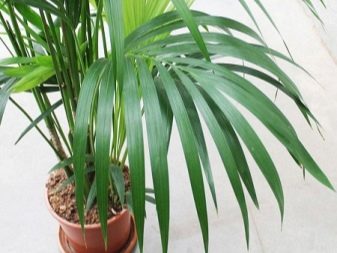
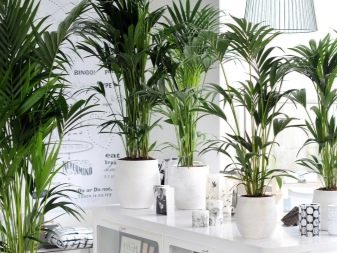
Views
There are only two varieties of this indoor flower: Hoveya Forster (aka forsteriana) and Hoveya Belmore. Both species have a smooth, thin trunk from which feathery dark green leaves grow on long petioles. Plants differ only in crown shape and size.
- Forster. Hoveya Forster is the most popular indoor palm tree among florists. This is a rather large plant with a thin graceful trunk and large wide leaves on long, up to one and a half meters, petioles growing in a bunch. Domestic varieties reach a height of 3-3.5 meters by the age of 7-8 years.
- Belmora. Unlike forsteriana, the Belmora Hovei has a slightly thicker trunk at the base, and the cuttings bend to the ground, forming an arc. The leaf size of an adult plant is approximately 4 meters, and the total height of a palm tree can exceed 10 meters.
All types of hovey can bloom and bear fruit, but, alas, only in the greenhouse conditions of greenhouses.
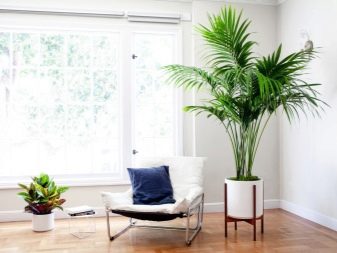
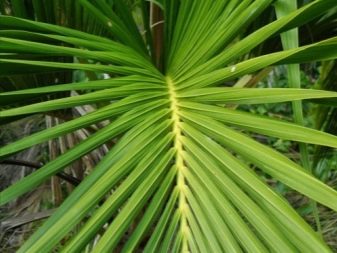
Growing conditions
Since Kentia belongs to the subtropical species of palm trees, it is able to withstand the harsh conditions of the middle lane much better than its capricious tropical counterparts. It quickly adapts to the difference between night and day temperatures and feels great in partial shade, which makes Hoveia an ideal option for landscaping halls, corridors and offices. The optimum temperature for keeping hovea is between 10 ° C and 20 ° C.At higher temperatures, the palm should be sprayed with water several times a day. Hovea is also unpretentious to the soil.
Any ready-made palm substrate will do. The only condition is that the soil must be moist and saturated with mineral fertilizers. In terms of lighting, a light partial shade or a room on the west or east side of the house would be the best option. Under too bright direct rays, the plant will dry and turn yellow, and in the shade it will stop growing. The total length of daylight hours should be no more than 14 hours, but not less than 10. Therefore, it makes sense to purchase a phytolamp to provide the palm tree with optimal conditions for growth.
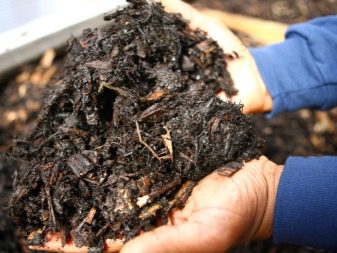
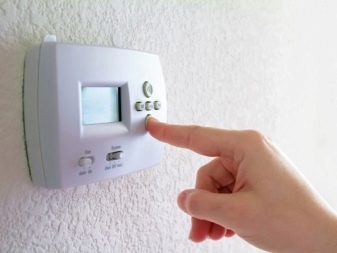
Care
In order to grow a healthy and beautiful plant, it must be properly cared for. Hoveya is no exception in this regard.
Spraying
To create an optimal microclimate and maintain sufficient humidity, the hovei should be sprayed with water at room temperature from a spray bottle twice a day. In winter, when heating devices are constantly working at home, you can do this more often. In the spring-summer period, it will not be superfluous to arrange a warm shower for the palm tree, having previously wrapped the pot with polyethylene so that water does not get onto the soil.
Watering
In late spring and summer, when the hovea is growing rapidly and requires more moisture and nutrients, the plant is watered 4 times a week. In winter, the palm tree needs to be watered only when the topsoil is slightly dry. Since the hovea has a rather extensive root system, watering should be abundant, but without bends. Excessive moisture will lead to rot formation. The water should be at room temperature. It is better to defend it in advance, or pass it through a filter. Boiled water is not suitable for watering plants, as it contains little oxygen.
The day after watering, it is recommended to gently loosen the topsoil in the pot to improve its condition.
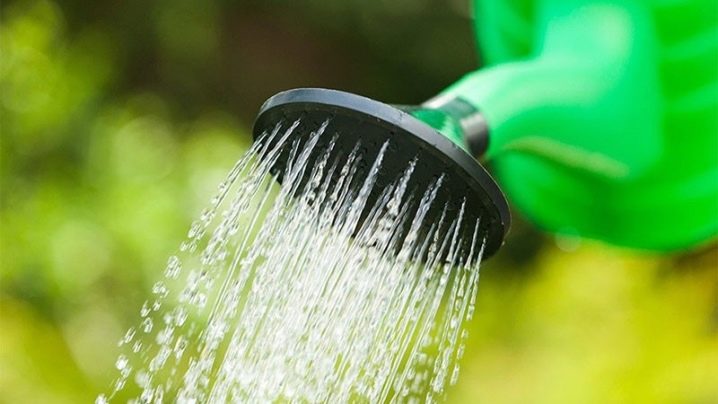
Top dressing
Top dressing is carried out in the warm season (from May to September) during the period of active growth. This is done every 7-10 days using special mineral fertilizers for domestic palms - Bona Forte, Palm Focus, Green Paradise or any other product with a suitable composition. And you can also make fertilizer yourself at home. Here are some effective folk recipes.
- Onion peel decoction: 100 grams of husks are poured with 3 liters of hot water and boiled for 10 minutes. Then the broth is insisted for several more hours, filtered, and poured over with hovei.
- Wood ash solution: 200 grams of ash is poured into a bucket of warm water, and infused for 5-7 days. Then the mixture is filtered and used for watering.
- Yeast solution. The yeast cake is dissolved in three liters of warm water and left overnight. Before feeding, the resulting solution is diluted with water in a ratio of 1: 10.
- A nutritious cocktail made from banana and orange peels. Banana and orange peels are crushed in a blender, poured with three liters of hot water, infused for three weeks at room temperature. The resulting nutrient liquid is stored in the refrigerator. Before watering, the mixture is diluted with clean warm water in a ratio of 1: 20.
- Starch-based top dressing: 200 grams of starch is diluted in 3 liters of water, boiled over medium heat for five minutes. The resulting mass is bred in a bucket of warm water, watered with a solution on a palm tree once a week. In addition, you can do even easier - use the water left after boiling the potatoes for feeding.
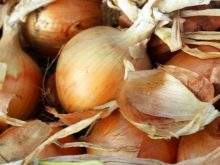
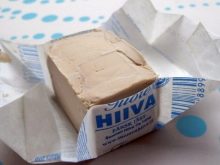
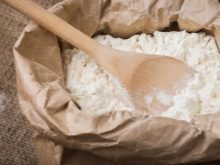
Transfer
Palm trees do not like change, and these plants are transplanted only when the pot becomes too small for them. If the roots creep out of the drainage holes and rise above the surface of the soil, this is a sure sign that the hove needs a new "house". In the case of a young plant, a transplant must be carried out every spring, and when the palm tree reaches 5 years old, every 3-4 years. At each transplant, the pot is selected slightly larger than the previous one.
Before the procedure, the soil is spilled abundantly and left for 10-15 minutes to soften. Then, with a wooden stick, carefully separate the lump of earth from the walls of the pot, and carefully remove it. The damaged roots are removed, the cut sites are disinfected with a solution of potassium permanganate. A drainage layer and fresh soil are poured into a new pot. Hoveya is installed in the center and sprinkled with earth on the sides, tamping it a little. After a few hours, the plant can be watered. And so that the pot with the hoveia does not knock out of the interior, it is installed in a pots - a special decorative vase for indoor flowers. Planters with an automatic bottom watering system are especially convenient. Such double bottom tanks make it much easier to care for plants, they allow you not to worry about the fate of green pets during a long vacation outside the home.
After transplanting, fertilizing is done only after 2-3 weeks. This time is needed so that the hovea gets used to its new habitat and does not spend additional energy on absorbing nutrients from the soil.
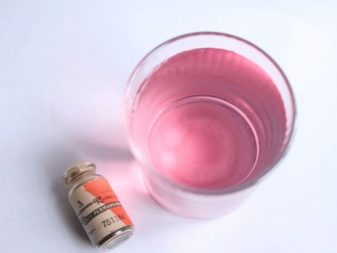
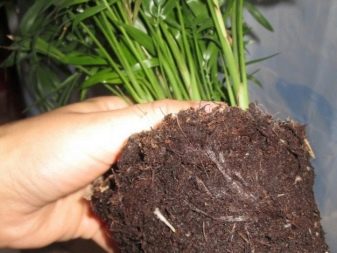
Pruning
Like other palms, hovea does not require constant pruning. It will be quite enough to remove withered leaves once a season. This must be done, stepping back 1-1.5 cm from the base, so as not to damage the trunk. Also, don't prune too many leaves. If the tips of the "feathers" are dry, you should carefully cut off the damaged parts without tearing off the sheet completely.
Reproduction
Kentia reproduces both by seed and by dividing the bush into processes. The first method is very problematic to carry out at home, because in indoor conditions this palm tree does not bloom. Of course, there is always an opportunity to buy seeds in a store, but their germination rate will not be more than 50% of the total, and if successful, the transformation of sprouts into full-fledged palms will have to wait another two or three years.
Seeds
Before planting, the seed is soaked in warm water for 5 days. Next, small pots are filled with a special soil mixture for palm trees, not reaching the edge of the container by one centimeter. The soil is well moistened, the hard shell of the seeds is filed with a file. In each pot, one seed is planted with the sawn part down. To ensure sufficient moisture, the pots are wrapped in plastic wrap. It is removed only once a day for airing. The temperature should be at least 27-28 ° C. Bottom heating is used if necessary. As soon as the seedlings grow 3-4 centimeters, the seedlings are transplanted into the soil for adult plants.
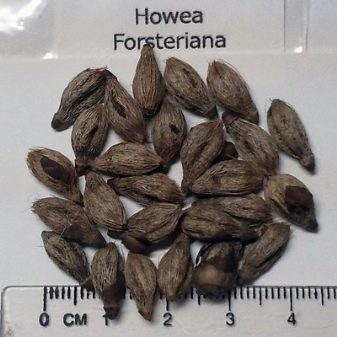

By shoots
For the propagation of hovea by shoots, it is necessary to carefully separate the young shoot from the plant, and transplant it into a separate pot filled with a mixture of peat and sand in equal proportions. If the shoot takes root, then three months after rooting it is transplanted into the soil for palm trees. At first, the plant must be protected from excessively bright light. Optimal conditions for young seedlings are partial shade, temperature 20-25 ° C and high humidity. Two weeks after the appearance of the roots, fertilizing can be introduced into the soil at the rate of half of the dose for an adult plant.
Diseases and pests
In general, hovea is an unpretentious houseplant, with which even novice florists do not have problems. However, in the case of improper care, it is also exposed to diseases and pest attacks. Spider mites, mealybugs (they are also felt), thrips and scale insects can settle on a palm tree. Of the phyto-diseases in hovea, gray and black rot are most often found, which develop as a result of stagnant moisture in the soil. Below is a list of possible content problems and tips on what to do about it and how to avoid it.
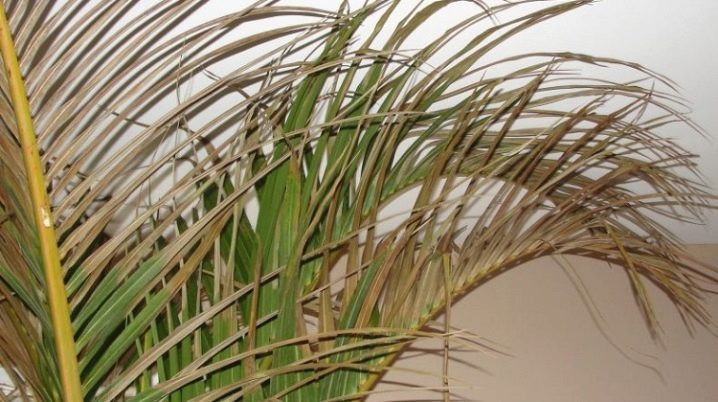
Leaves dry and turn yellow
The reason for these symptoms is low humidity. It should be remembered that hovea is a tropical plant, and to create conditions close to natural, the palm tree must be sprayed with water at room temperature from a spray bottle twice a day, and also kept away from heating appliances. You can put a humidifier or a container of water in the room.
This problem is especially urgent in winter, when, due to the operation of central heating batteries, the air humidity in the apartment drops to 60%.
Darkening of leaves, black dots and a thin whitish cobweb
These signs indicate a spider mite infestation. The reason for the appearance of parasites lies, again, in low humidity and high temperatures. Treatment is as follows: rinse the leaves thoroughly with warm water and laundry soap and wipe the affected parts with a cotton swab dipped in alcohol. This will help eliminate some of the pests. Further, the plant is treated with acaricides and insectoacaricides. Such drugs as "Apollo", "Agravertin", "Fitoverm", "Nissoran" and "Kleschevit" have proven themselves well.
As a preventive measure, you should regularly humidify the air in the room, and inspect the leaves for parasites.
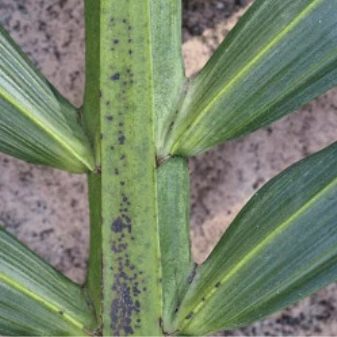
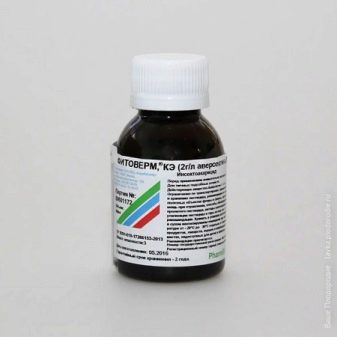
Brown spots on the leaves
Brown leaves indicate excess moisture. To fix the problem, you need to carefully remove the palm tree from the pot and examine the roots. If there are rotten parts, they are removed. Places of cuts are sprinkled with charcoal, fresh soil is covered, and the plant is returned to its place. Further, it is important to provide full-fledged care, and not flood it.
Black or gray bloom on roots and root processes
The cause of this ailment is gray rot. To eliminate it, all affected parts of the plant are removed, healthy roots are sprinkled with crushed charcoal or treated with a slightly pink solution of potassium permanganate.
White larvae on leaves and stem, white bloom
The larvae in the form of small white sticks the size of a grain of rice are mealybugs. In this case, the hoveu is washed under a warm shower with soap, the leaves are wiped with potassium permanganate, watered and sprayed with Aktara. Withering of the lower leaves indicates that the palm is lacking in nutrients. Therefore, in spring and summer, it is necessary to feed the plant with complex mineral preparations.
The reason for the pale color of foliage and slow growth lies in the lack of light. Hovee needs a sufficiently lit place, but protected from direct sunlight. In winter, you can additionally use phytolamps. And also it will not be superfluous to inspect the roots of the plant and, if necessary, transplant it into a new, more spacious pot.
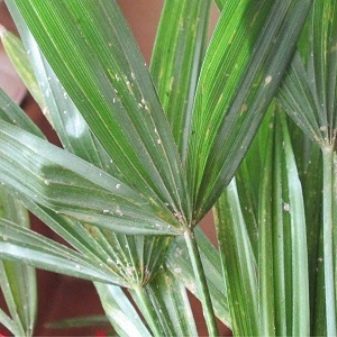
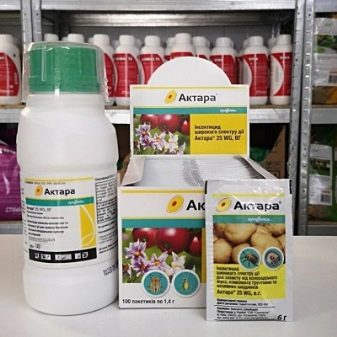































The comment was sent successfully.